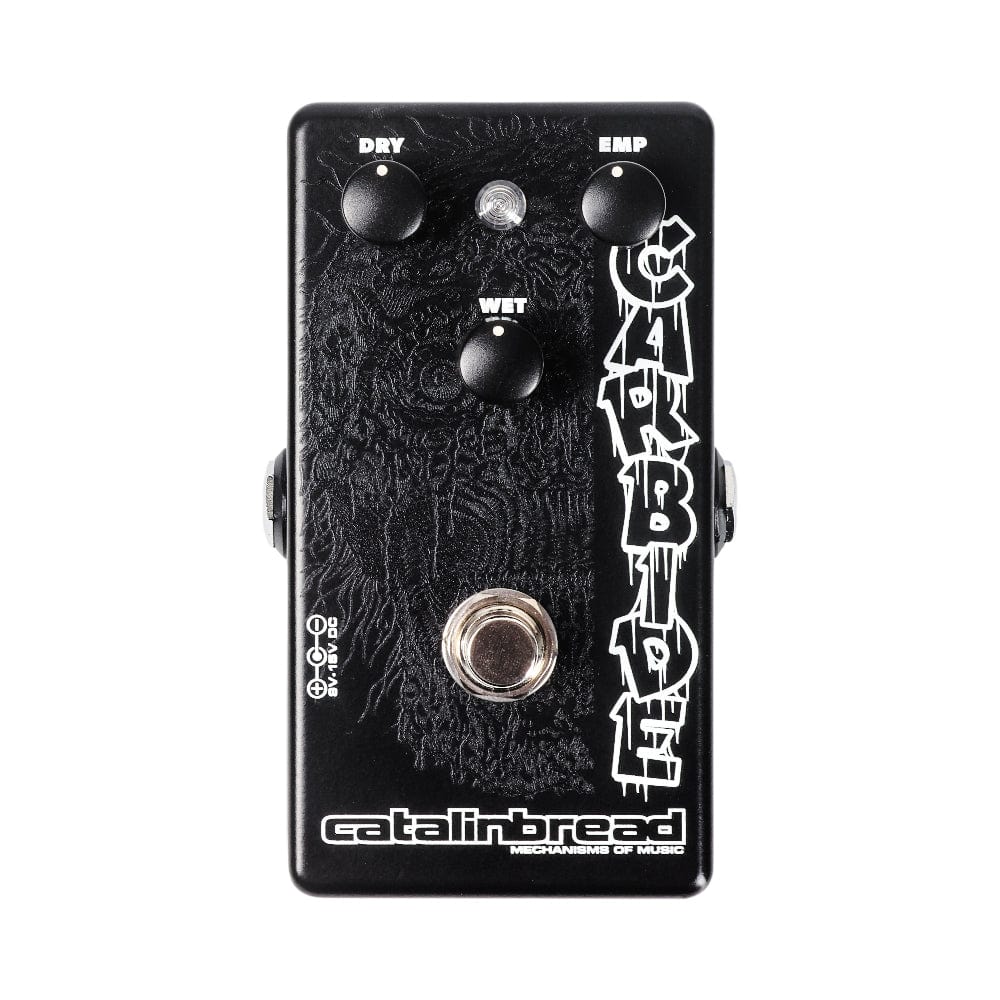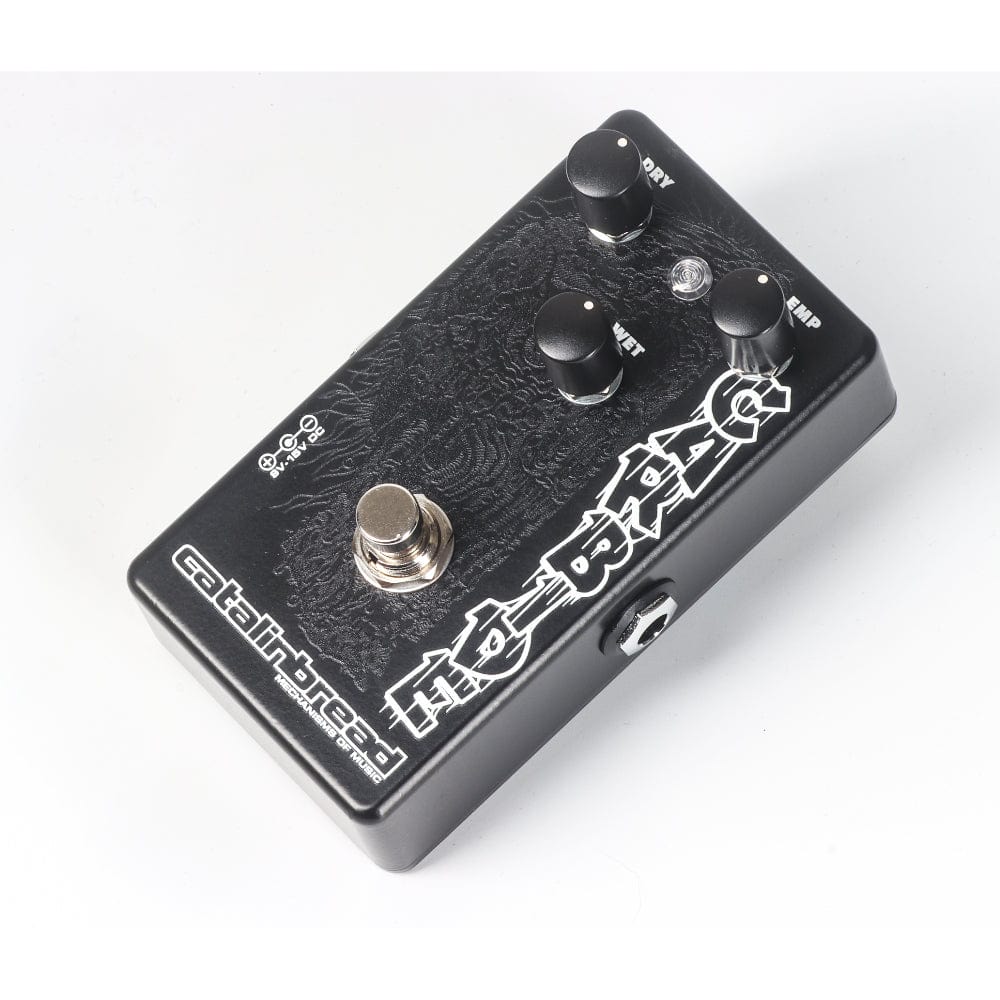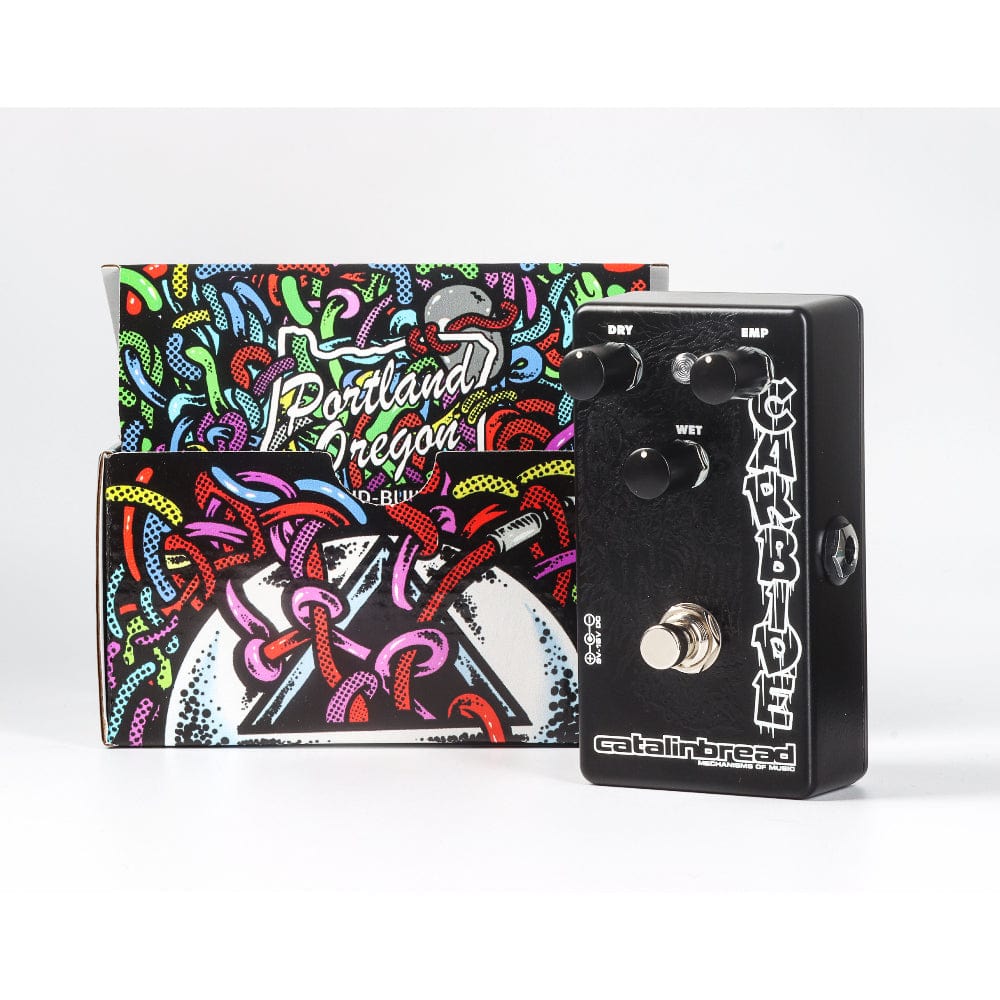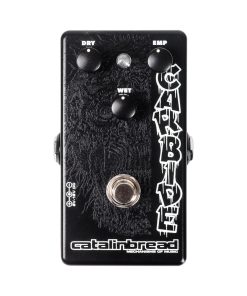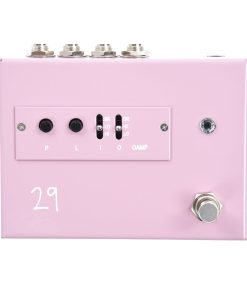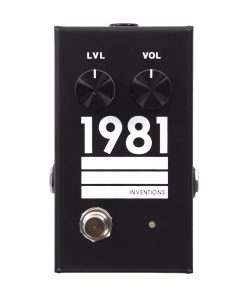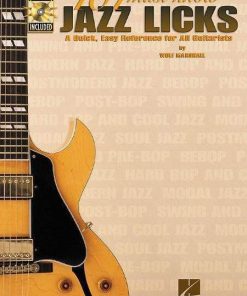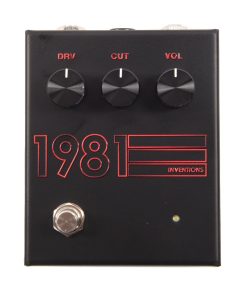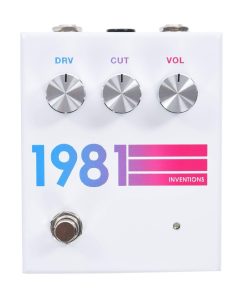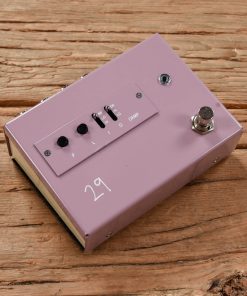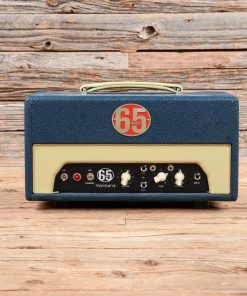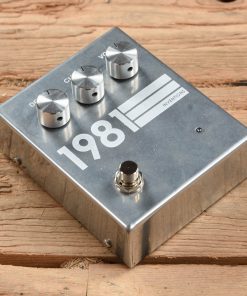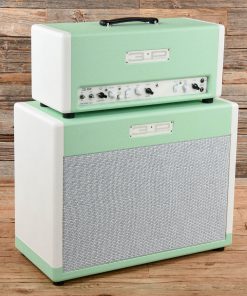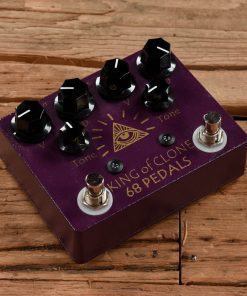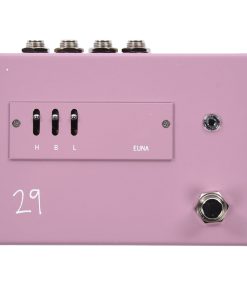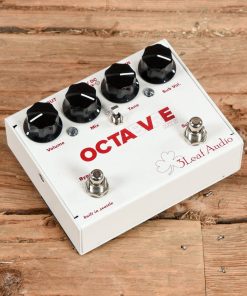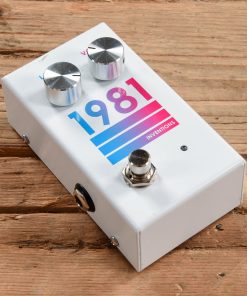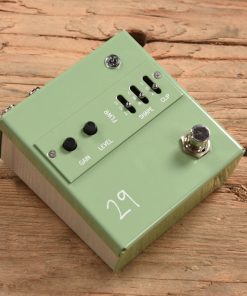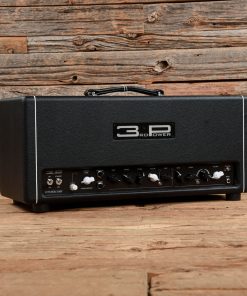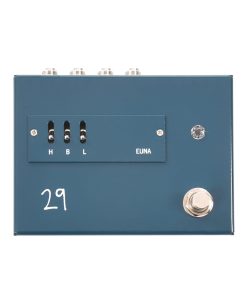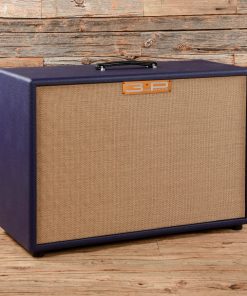Catalinbread Carbide Distortion Pedal Catalinbread
$ 142,49 $ 57,00
If you’ve been a fan of music with guitars tuned lower than standard in the last 30 years, there’s a chance you’ve heard of this hot new sound, usually associated with heavy riffs and power tools. In lay terms, the Carbide is a pulverizing distortion with heady boosts to certain frequency bands—three of them, to be exact—and a ton of volume. Officially, obtaining this “chainsaw sound,” as it came to be known, consists of plugging into a Boss HM-2 Heavy Metal and maxing all four knobs. Our Carbide starts with this at its base, then tweaks the majority of the distortion circuit for maximum crunch and thud. Instead of giving you a paltry blend control, the Carbide splits your signal into two paths; one path heads to a powerful clean boost specially configured to downtuned instruments, the other heads into the gears of the distortion. Each path is given its own volume knob before being mixed in parallel, letting you fine-tune the right amount of dirt. An Emphasis control tightens up the extreme low end while cutting treble, letting the boosted frequency bands jump out of the mix.
CONTROLS
- Dry Volume and Wet Volume: These two knobs control the volume levels of the dry, boosted path and the wet, “chainsaw” path. When either one is down, it disappears from the mix. These two circuits are in parallel, so you can mix both sides to your taste or rig.
- Emphasis: The stock HM-2 circuit gives you two “color mix,” or EQ knobs: L(ow) and H(igh). The “L” knob controls a frequency boost at 87Hz, but the “H” knob actually controls two different bands simultaneously, at 958Hz and 1279Hz. The Carbide keeps these three boosts intact, but the Emphasis control cuts frequencies around these bands, making them pop a little more. Like the “H” knob of the original, the Emphasis control adjusts two different filters simultaneously, one at 63Hz and a treble shelving filter. The Q of the low filter is just wide enough to butt up against the onboard bass boost. while knocking out pesky sub bass.
- POWER SUPPLY: The Carbide accepts a center-negative DC power supply from 9 to 15 volts, capable of supplying at least xxmA of current (over is fine). Plugging in anything other than this (center-positive, AC, higher voltage, etc.) will potentially brick the Carbide. I cannot recommend doing this. Check your supply and make 100 percent sure it says all the right stuff. If you plug in the wrong supply, you’ll immediately send your pedal to the shadow realm. Even though that sounds pretty cool, your Carbide doesn’t want to go there, this I can promise.
Fast Shipping with Professional Packaging
We offer a wide range of shipping options due to our long-standing partnerships with UPS, FedEx and DHL. Our warehouse staff are trained to pack your goods exactly according to the specifications we offer. Before shipping the goods are thoroughly examined and secured. Every day, we send thousands of packages to clients from all over the world. Our determination to be the biggest online retailer in the world is shown by this. The warehouses are located in Europe as much as they are in USA.
Note: Orders with more than one product will be assigned a distinct processing time, dependent on the particular item.
Before shipping, we will examine the items ordered thoroughly before sending the items. The majority of orders are shipped within 48 hrs. The delivery estimate is between 3-7 days.
Returns
The stock is constantly changing and cannot be fully controlled by us because of the involvement of several parties including the factory and our warehouse. Stock levels can fluctuate at any given time. Please be aware that it is possible that your order could become unavailable even after you've placed your order.
Our policy is valid for a period of 30 days. If 30 days have passed by since your purchase however, we're unable to give an exchange or refund.
In order to be eligible for a refund your product must be unopened and in the same state as you received it. It should also be in the original package.
Related products
Effects and Pedals / Overdrive and Boost
Effects and Pedals / Overdrive and Boost
1981 Inventions DRV Overdrive Black Hyperfade 1981 Inventions
Effects and Pedals / Overdrive and Boost
Parts / Amp Parts
920D Custom S5W-HSS Stratocaster HSS 5-Way Super Switch Wiring Harness Upgrade 920D Custom
Accessories / Books and DVDs
Amps / Guitar Combos
Accessories / Books and DVDs
Effects and Pedals / Overdrive and Boost
1981 Inventions Special Edition Stranger DRV Overdrive Pedal 1981 Inventions
Effects and Pedals / Overdrive and Boost
1981 Inventions DRV Overdrive White Hyperfade 1981 Inventions
Effects and Pedals / Preamps
Effects and Pedals / Wahs and Filters
Amps / Guitar Heads
Accessories / Merchandise
Effects and Pedals / Overdrive and Boost
Amps / Guitar Heads
Parts / Amp Parts
920D Custom ES335-JP Wiring Harness for Gibson/Epiphone ES-335 w/Four Push/Pulls 920D Custom
Amps / Guitar Cabinets
3rd Power Amplification Dual Citizen 2-Channel 40-Watt Head w/ 2×12 Cab 3rd Power Amplification
Effects and Pedals / Overdrive and Boost
Effects and Pedals / Overdrive and Boost
29 Pedals Special Run Crunch Berry EUNA Elite Unity Amplifier Input Driver 29 Pedals
Parts / Amp Parts
920D Custom JB-C Upgraded Replacement Wiring Control Plate For Fender Jazz Bass 920D Custom
Effects and Pedals / Octave and Pitch
Parts / Amp Parts
920D Custom JB-CON-CH/BK+T Upgraded ’62 Jazz Bass Concentric Control Plate w/Toggle 920D Custom
Accessories / Books and DVDs
Effects and Pedals / Overdrive and Boost
Effects and Pedals / Overdrive and Boost
Amps / Guitar Cabinets
3rd Power Amplification Kitchen Sink Guitar Head 3rd Power Amplification
Effects and Pedals / Overdrive and Boost
Amps / Guitar Cabinets
3rd Power Amplification 2×12″ Guitar Speaker Cab 3rd Power Amplification
Parts / Amp Parts
920D Custom LP50-SPLIT Les Paul Wiring Harness Upgrade w/Coil Split Mod 920D Custom
Parts / Amp Parts
920D Custom S5W Stratocaster 5-Way Wiring Harness Upgrade 920D Custom
Parts / Amp Parts
